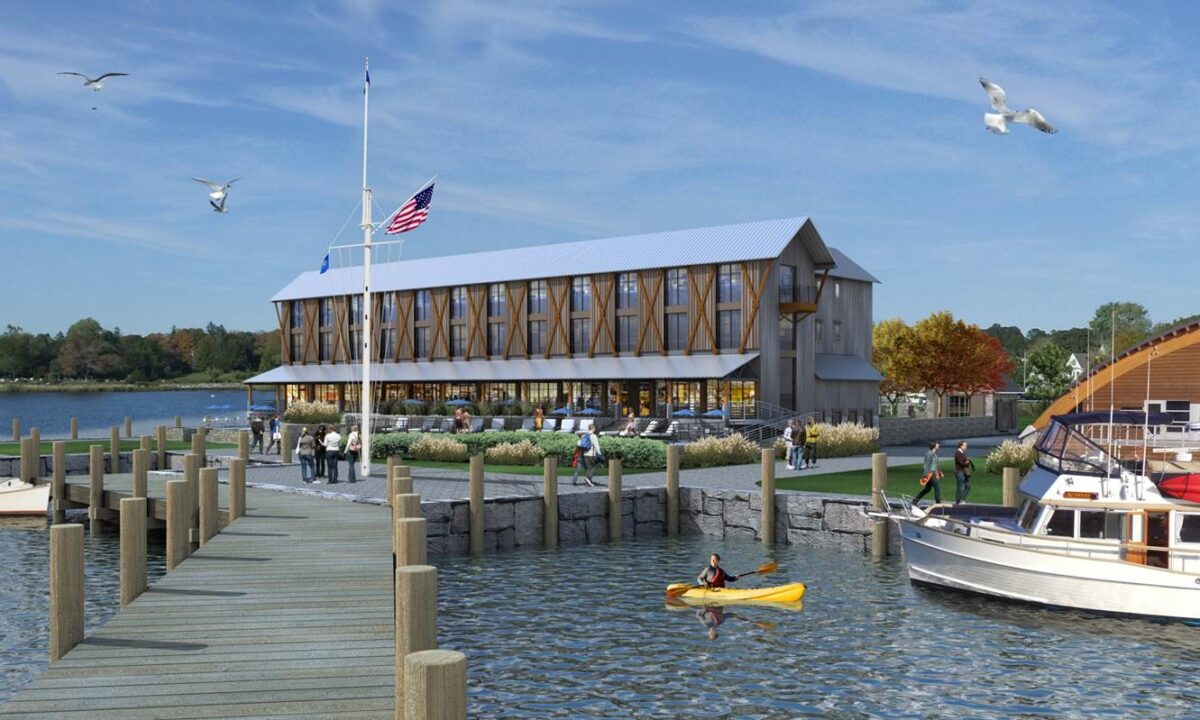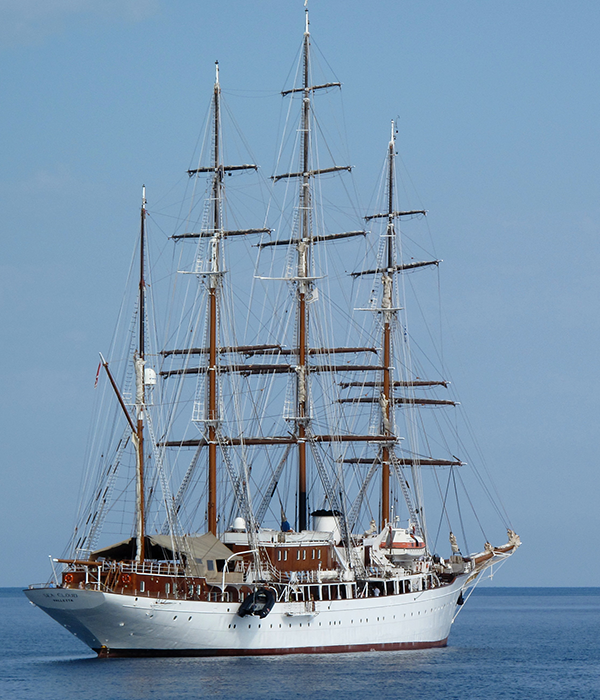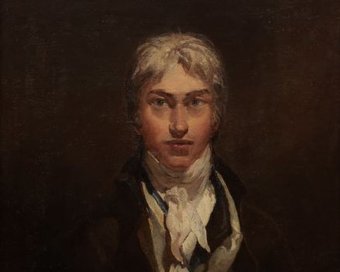Mystic Seaport Museum on YouTube


Mystic Seaport Museum remains closed to the public as we collectively work to halt the spread of the COVID-19 virus. This action is in keeping with our commitment to maintaining a healthy and safe environment, as well as with our responsibility to follow directives from the Federal and local governments.
Although we are closed to visitors, the business of the Museum goes on. Many of our staff members are able to telecommute and work from home, so if you have a matter that needs our attention, please do not hesitate to reach out via phone or email.
We will continue to keep visitors updated as this rapidly changing situation evolves. We appreciate your support during this difficult time and we look forward to inviting you back for a visit when we reopen.
Over the next several weeks we will be posting new content on our website and social media to help everyone pass the time. In the meantime, we encourage you to check out our Stories Blog which has a large collection of Museum videos. You may also want to peruse our Mystic Seaport Museum for Educators website. It has a wide variety of resources about our collection that can be of interest to the general audience as well as teachers.
Here is one of our favorite videos from the 38th Voyage of the Charles W. Morgan in 2014:
[embedit snippet=”atop-the-world-morgan-video”]
 The Museum announced today it is temporarily closing to the public beginning tomorrow, March 13, to support the State of Connecticut’s efforts to stem the outbreak of COVID-19. All programs, classes, and events during that period are also cancelled. The Museum anticipates reopening March 30, subject to further evaluation of the situation.
The Museum announced today it is temporarily closing to the public beginning tomorrow, March 13, to support the State of Connecticut’s efforts to stem the outbreak of COVID-19. All programs, classes, and events during that period are also cancelled. The Museum anticipates reopening March 30, subject to further evaluation of the situation.
Steve White, president of the Museum, stated: “Out of an abundance of caution we are taking this preemptive move to close to the public to protect the health of our community and of our employees and volunteers. We have been following the precautionary measures recommended by federal and local health authorities to ensure the cleanest environment possible. While we do not know of any exposure to COVID-19 connected with the Museum, we believe a temporary closure is the proper course of action in line with Gov. Ned Lamont’s request to minimize public gatherings and encourage employees to work from home to help stop the spread of this deadly virus. We look forward to welcoming visitors back to the Museum at the conclusion of this period.”
Individuals or groups with program reservations during this time will be contacted to reschedule or process refunds.
The Museum is implementing its emergency operations protocol, and will continue to monitor the situation and take appropriate additional action as necessary.
Mystic Seaport Museum is following the recommendations of the Centers for Disease Control and Prevention (CDC), the Connecticut Department of Public Health, and the local health authorities pertaining to the Coronavirus outbreak. We are actively monitoring the situation and implementing recommended policies.
We are presently open to the public and we have not cancelled any classes, workshops, or programs. The Museum’s operating hours remain Thursday-Sunday, 10 a.m.-4 p.m.
We suggest all members of the public follow the CDC’s suggested precautions, including staying home if they feel sick or have other health concerns, and frequently washing their hands.
Should the need arise to cancel or postpone any of our programming, or close the Museum to the public, we will make the announcement through the appropriate communication channels, including (but not limited to) our website, social media platforms, and direct communication with individuals registered for a class or workshop.


The Town of Stonington Planning and Zoning Commission approved the proposed Delamar hotel at a special meeting March 3. The decision paved the way for the demolition of Latitude 41° Restaurant and the construction of a new boutique hotel and restaurant.
The three-story, 27-room boutique hotel and restaurant, to be called the Delamar Mystic, will be located further back on the property closer to the Mystic River. The space now occupied by Latitude 41° will be converted to a circular driveway with valet parking. Architect Bruce Beinfield of Norwalk, CT, who cited the area’s grand beach hotels of the 19th century as his inspiration, designed the building.
The developer for the project is Greenwich Hospitality Group, which will lease the property from the Museum. The company’s founder and chief operating officer is Charles Mallory, who was a longtime trustee of the Museum. Greenwich Hospitality Group operates Delamar hotels in Greenwich, Southport, and West Hartford.
The Museum built the Latitude building in the mid-1960s as a restaurant. In addition to issues associated with the structure’s age, it suffers from regular flooding and it was determined the best course forward would be to replace the building and not renovate it.
Plans call for Latitude 41° to be razed in early 2021 followed by a groundbreaking for the hotel. Construction will continue into 2022.



DECEPTION ISLAND — When Nathaniel’s Palmer’s sloop Hero anchored at Deception Island on that fateful day in 1820 when it is thought that Palmer first saw the continent of Antarctica, a small sailor’s ditty box was along for the ride. Two hundred years later, that same box – now in the Museum’s collection – made the trip back to the very same harbor.
The trip was the idea of Museum trustee Alex Bulazel, who has traveled to Antarctica and the Arctic many times. It was Bulazel who called attention to the 200th anniversary of Palmer’s sighting of the continent.

Bulazel, Museum president Steve White, and 12 other people with ties to Mystic Seaport Museum were part of a group of 186 passengers on the ship Le Lyrial on a cruise to Antarctica in January to visit sites connected to the Palmer bicentennial. The expedition was organized by the luxury travel company Abercrombie & Kent. Glenn Gordinier, co-director of the Museum’s Munson Institute, was on board to give talks on the history of the Palmer story and Antarctica.
Palmer and a crew of four were on a sealing expedition on the 47-foot Hero. While anchored in Whalers Bay on Deception Island, Palmer went ashore and climbed a hill where he saw the continent of Antarctica for the first time on November 17, 1820. Two other expeditions led by the Russian explorer Fabian Gottlieb von Bellinghausen and Englishman Edward Bransfield also sighted the continent earlier in the year.
The 7″ x 3″ wooden ditty box was donated to the Museum in 1950. It is ornately carved and has an inscription, “L.B. Stonington Slp. Hero.” The L.B. probably stands for Stanton L. Burdick, who was 16 at the time. Ditty boxes were carried by sailors, who would keep special items and personal remembrances in them during their time at sea.


NEW YORK – Amtrak continues to prioritize upgrading the customer experience as travelers along the Northeast Corridor (NEC) will now benefit from increased weekday service on Northeast Regional trains at popular stations in Mystic, CT, and Westerly, R.I., to receive more access to the region’s major markets. The new schedule, which largely alternates trains at these stations to provide more meaningful service, will go into effect beginning Monday, March 16, 2020.
There will be four additional stops on Southbound trains and three additional stops on Northbound trains.
“By providing additional service for Mystic and Westerly, travelers and residents will reap the benefits of a more efficient travel experience,” said Amtrak President and CEO Richard Anderson. “The benefits will also expand beyond these two stations as it allows Amtrak to better serve populations and cities along the NEC by offering additional access to and from urban areas in Boston, New York, and Virginia.”
Weekday Southbound trains will now stop at Westerly and Mystic at the following times (new service highlighted in red):
| Train Number | Westerly, R.I. | Mystic, CT |
| 95 | 7:20 a.m. | 7:30 a.m. |
| 171 | – | 9:37 a.m. |
| 93 | 10:38 a.m. | – |
| 173 | – | 12:38 p.m. |
| 137 | 2:56 p.m. | – |
| 175 | – | 4:39 p.m. |
| 177 | 6:53 p.m. | – |
| 179 | – | 8:08 p.m. |
| 65/67 | 11:05 p.m. | 11:17 p.m. |
Weekday Northbound trains will now stop at Westerly and Mystic at the following times:
| Train Number | Mystic, CT | Westerly, R.I. |
| 66 | 5:49 a.m. | 6:01 a.m. |
| 190 | – | 9:55 a.m. |
| 170 | 11:21 a.m. | – |
| 172 | – | 1:55 p.m. |
| 86 | 3:16 p.m. | – |
| 174 | – | 4:56 p.m. |
| 176 | 6:40 p.m. | – |
| 94 | – | 8:44 p.m. |
| 178 | 10:45 p.m. | 10:55 p.m. |
In addition to the customer benefits and improvements to quality of travel via the expanded service, Amtrak also remains committed to continuous improvement and innovation throughout the entirety of its rail network, on its trains and at its stations. Amtrak recently announced the expansion of its popular assigned seating offering in Business Class for Northeast Regional trains, which provides a more seamless onboarding process and the option for customers to select their preferred seat. Northeast Regional trains, as part of Amtrak’s NEC fleet, are also the country’s only all-electric intercity trains, providing a more environmentally friendly way to travel as part of Amtrak’s goal to reduce its carbon footprint.
There are no changes to weekend trains at this time; Schedules are subject to change. Tickets are now on sale on Amtrak.com, the Amtrak app, via our ticket agents or by calling 1-800-USA RAIL.
Source: Amtrak press release.

Mystic, Conn. (January 28, 2020) — Mystic Seaport Museum will hold its annual Ice Festival, February 15-17. The event will be three days of winter activities in conjunction with the exhibition J.M.W. Turner: Watercolors from Tate, now on display in the Museum’s Collins Gallery.
Families are invited to enjoy games, activities, music, and entertainment throughout the Museum’s grounds:
In conjunction with the Turner exhibition, there will be daily screenings of the feature film Mr. Turner and periods of piano music in the gallery on Sunday and Monday. The exhibition ends it run at the Museum on Sunday, February 23.
New to the festival this year is “Resonances Boreales,”a live piano performance by Canadian musician Roman Zavada set to a stunning 360-degree video of the Northern Lights projected onto the dome of the Planetarium. There will be daytime and evening performances. Daytime performances are 30 minutes long and will occur at 1 and 3 p.m. all three days of the festival. Tickets are $3 for members and $5 for non-members and can be purchased at the Planetarium starting at 10 a.m. on the day of the show.
The evening shows are 60-minute performances beginning at 7 p.m. on February 14-16. Tickets for these after-hours events are $8 for members and $10 for non-members (General admission not required for the evening shows and tickets can be purchased in advance).
General admission tickets will be valid for all three days of the Ice Festival.
For more information, please visit mysticseaport.org/icefestival.
About Mystic Seaport Museum
Mystic Seaport Museum, founded in 1929, is the nation’s leading maritime museum. In addition to providing a multitude of immersive experiences, the Museum also houses a collection of more than two million artifacts that include more than 500 historic vessels and one of the largest collections of maritime photography. The new Thompson Exhibition Building houses a state-of-the-art gallery that currently features J.M.W. Turner: Watercolors from Tate, the most comprehensive exhibition of Turner watercolors ever displayed in the U.S. Mystic Seaport Museum is located one mile south of Exit 90 off I-95 in Mystic, CT. For more information, please visit https://mysticseaport.wpengine.com/ and follow Mystic Seaport Museum on Facebook, Twitter, YouTube, and Instagram.


Mystic, Conn. (January 7, 2020) — In conjunction with the exhibition J.M.W. Turner: Watercolors from Tate, now on display on the Museum’s Collins Gallery, Mystic Seaport Museum is hosting “Tea with Turner,” a weekly lecture series that features a lineup of prominent speakers who will explore the iconic artist’s world, including his travels, techniques, and the time in which he lived.
The “Tea with Turner” series runs every Tuesday from January 14 to February 11.
Tea and lectures will take place in the dining room at Latitude 41° Restaurant at the Museum. A traditional British afternoon tea will be served at 3:30 p.m. The talks begin at 4 p.m. Participants are encouraged to view the show beforehand (same-day admission is included for non-Museum members).
January 14: Turner’s Inhabited Landscapes
Alexis Goodin, curatorial research associate at the Clark Art Institute in Williamstown, MA, will explore the significance of the human figure in Turner’s landscapes. More than markers of scale, Turner’s figures contribute to compelling narratives that reveal social, cultural, and political concerns of Turner’s day. Goodin will discuss works in the exhibition as well as paintings in the Clark collection that reveal how Turner’s figures enrich and complicate his landscape paintings. Goodin recently curated the exhibition Turner and Constable: The Inhabited Landscape (2018-2019) and authored the accompanying booklet, Turner and Constable at the Clark (2018).
January 21: Turner and Switzerland
Constance McPhee, curator in the Department of Drawings and Prints at the Metropolitan Museum of Art, will explore Turner’s repeated visits to Switzerland, focusing on four seminal trips that he made to the area around Lucerne in the 1840s. Switzerland’s terrain and history were central to Turner’s artistic imagination, and its mountains and lakes offered him life-long inspiration. Using The Metropolitan Museum’s The Lake of Zug, 1843 as a touchstone, this talk will consider how the artist’s travel sketches offer fascinating windows into his process and supported masterful finished watercolors now regarded as highpoints of British art.
January 28: Why Turner?
Artist Ellen Harvey, who contributed to Mystic Seaport Museum’s recently published book Conversations with Turner, in connection with the current exhibition, will be discussing her own work, its relationship to J.M.W. Turner, and why she considers Turner’s work to be relevant to many issues we face today. Harvey is a British-born artist living and working in Brooklyn, New York. She is a 2016 recipient of a John Simon Guggenheim Memorial Fellowship in the Visual Arts and a graduate of the Whitney Independent Study Program. Her new project, Ellen Harvey and J.M.W. Turner: The Disappointed Tourist, will be opening at Turner Contemporary in the UK in the summer of 2020.
February 4: Turner and Industry
Glenn Adamson, senior scholar at the Yale Center for British Art, is a historian and curator specializing in craft and design. He will offer thoughts on Turner’s work in the context of the industrial revolution. Turner lived during one of the greatest periods of transformation in history, one with certain parallels to our own. His paintings sometimes captured the awe-inspiring power but also the trauma of these shifts.
February 11: From Mystic to New York: A Close Look at the Frick Turners with Susan Grace Galassi
After examining J.M.W. Turner’s watercolors of the 1820s on view in the Mystic Seaport Museum exhibition, Galassi will shift the subject to New York City to look in depth at two of the artist’s masterpieces in oil from the mid-1820s, both centerpieces of The Frick Collection’s West Gallery. These luminous harbors of Dieppe and Cologne reveal Turner’s preoccupation with Continental subjects following Napoleon’s defeat and the lifting of travel bans. They also showcase the artist’s technical experimentation in which he brought qualities of the watercolor medium into oil paint, arousing the ire of critics and leading to a turning point in his art. Susan Grace Galassi is curator emerita of The Frick Collection. In 2017, she was co-curator with Ian Warrell and Joanna Sheers Seidenstein of Turner’s Modern and Ancient Ports: Passages Through Time.
Tea with Turner Tickets
Afternoon tea will be served at 3:30 p.m. Talks begin at 4 p.m. Both events take place in the Latitude 41° Restaurant Dining Room at Mystic Seaport Museum.
Members: $30 per lecture, or $135 for all 5 lectures
Non-members: $35 per lecture, or $160 for all 5 lectures (includes same-day Museum admission)
Tickets can be purchased by calling 860.572.5331 or purchased online at https://mysticseaport.wpengine.com/tea-with-turner/
About Mystic Seaport Museum
Mystic Seaport Museum, founded in 1929, is the nation’s leading maritime museum. In addition to providing a multitude of immersive experiences, the Museum also houses a collection of more than two million artifacts that include more than 500 historic vessels and one of the largest collections of maritime photography. The new Thompson Exhibition Building houses a state-of-the-art gallery that currently features J.M.W. Turner: Watercolors from Tate, the most comprehensive exhibition of Turner watercolors ever displayed in the U.S. Mystic Seaport Museum is located one mile south of Exit 90 off I-95 in Mystic, CT. For more information, please visit https://mysticseaport.wpengine.com/ and follow Mystic Seaport Museum on Facebook, Twitter, YouTube, and Instagram.